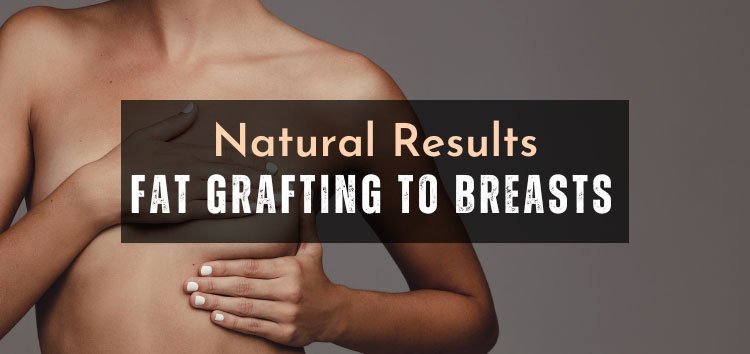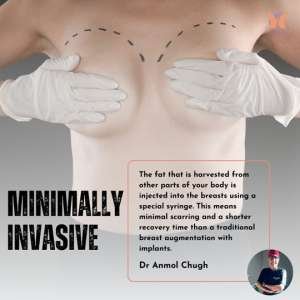
How to Get Natural Results from Fat Grafting to Breasts?
What is Fat grafting?
Fat grafting to the breasts, also known as autologous fat transfer or fat transfer breast augmentation, is a surgical procedure where fat is harvested from one part of the body (typically through liposuction) and then injected into the breasts to enhance their size and shape.
Our Approach for the procedure
Minimally Invasive

The fat that is harvested from other parts of your body is injected into the breasts using a special syringe. This means minimal scarring and a shorter recovery time than a traditional breast augmentation with implants.
Own Fat

Autologous /self-fat grafting involves gather in graft from other parts of your body, typically the abdomen, buttocks or thighs and re-injecting to the breasts. This eliminates the risk of allergic reaction since it is made of your own cells.
Results
Since the fat used in the grafting is natural it gives more natural results without the need for artificial implants which can lead to complications or a foreign body feeling.
But to achieve natural results from fat grafting to breasts, it’s important to follow certain guidelines and considerations for the patient and surgeon:
Consult with a Skilled and Experienced Plastic Surgeon in India:
Choose a board-certified plastic surgeon who specializes in breast augmentation and has extensive experience with fat grafting. Look at before-and-after photos of their previous patients to assess their skill and the naturalness of the results they achieve.
Preoperative Planning:
During your consultation with Dr Anmol, discuss your goals and desires. He will evaluate your body proportions, breast shape, and skin quality to determine the best approach for achieving natural-looking results.
Realistic Expectations:
Understand that fat grafting can provide a modest increase in breast size. The amount of fat that can be successfully grafted is limited, and the results may not be as dramatic as those achieved with breast implants. Having realistic expectations is crucial to being satisfied with the outcome.
Postoperative Care:
Follow your surgeon’s postoperative instructions carefully. Wear any compression garments as recommended, avoid heavy lifting or strenuous activities, and attend all follow-up appointments.
Patience:
Keep in mind that not all of the grafted fat will survive, and some volume loss may occur over time. It may take several months to see the final results as the fat settles and integrates into the breast tissue.
What approach is taken for the surgery by consultants?
Patient Selection:
Ideal candidates for fat grafting to the breasts are typically those who desire a mild to moderate increase in breast size, have enough donor fat available, and are in good overall health. Patients with minimal breast sagging may also benefit from fat grafting as it can provide a subtle lift.
Harvesting and Processing of Fat:
The quality of fat harvested is crucial for successful grafting. Your surgeon will carefully harvest fat from donor areas such as the abdomen, thighs, or flanks. Gentle liposuction techniques are used to minimize damage to the fat cells. The harvested fat is then processed to remove impurities and excess fluids before it is injected into the breasts.
Layered Approach:
To achieve natural results, the surgeon may use a layered approach, injecting small amounts of fat at a time and carefully sculpting the breasts to achieve a harmonious and proportional result.
Minimize Disruption to Breast Tissue:
The fat is typically injected into different layers within the breast tissue and beneath the skin. This approach helps us to minimize the disruption of existing breast tissue, blood vessels, and nerves, which can contribute to a more natural appearance and better fat survival.
Avoid Overfilling:
Overfilling the breasts with too much fat can lead to a less natural appearance and increase the risk of complications. Surgeons often err on the conservative side to ensure that the fat cells establish a blood supply and survive in their new location.
Remember that individual results can vary, and it’s essential to have open communication with your surgeon throughout the process. Be prepared for the possibility of additional procedures or touch-ups if needed to achieve your desired outcome.
